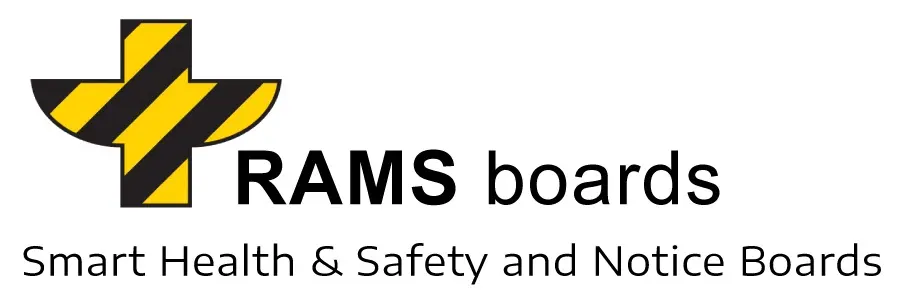RAMS boards play a crucial role in enhancing workplace safety compliance, especially in construction environments. Their contribution is multifaceted, encompassing various aspects of safety, information dissemination, and regulatory adherence.
- Centralized Safety Information: RAMS boards serve as a centralized location for displaying critical safety information. This includes risk assessments, safety protocols, emergency procedures, and SHEQ (Safety, Health, Environment, Quality) policies. By having a dedicated, visible spot for such information, RAMS boards ensure that all workers have easy and regular access to vital safety guidelines.
- Compliance with Safety Regulations: The presence of RAMS boards helps construction sites comply with various safety regulations and standards. They can be used to display mandatory notices and updates that are required by safety laws and guidelines in the construction sector. This is especially relevant in the context of the European Union, where strict safety regulations are in place.
- Customizable and Versatile: RAMS boards are designed to be adaptable to different workplace needs. They can be arranged as site hazard boards, H&S notice boards, or even as dedicated points for Autonomous Fire Point Units and Mobile First Aid Stations. This versatility ensures that they can be tailored to specific safety requirements of a construction site.
- Enhanced Visibility and Awareness: The design of RAMS boards, often bright and noticeable, ensures that safety messages are not only visible but also more likely to be registered and remembered by workers. This heightened visibility promotes a safety-conscious culture on the construction site.
- Durable and Weather-Resistant: Constructed from High-Density Polyethylene (HDPE), RAMS boards are resilient to various weather conditions. This durability ensures that safety information remains accessible and intact, regardless of environmental challenges.
- Integration with Advanced Safety Features: RAMS boards can potentially be equipped with additional safety features such as solar-powered lighting or integrated with IoT devices for real-time safety monitoring, provided such enhancements are implemented by the end user. These features can further elevate the role of RAMS boards in maintaining safety compliance.
- Educational Role: Beyond just displaying mandatory information, RAMS boards can be used for educational purposes, like hosting safety training materials or instructions for using safety equipment. This educational aspect reinforces safe work practices and keeps safety at the forefront of workers` minds.
- Regular Updates and Flexibility: The nature of RAMS boards allows for easy updating and changing of displayed information, ensuring that the latest safety protocols and information are always available to the workforce.
In summary, RAMS boards contribute significantly to workplace safety compliance by centralizing safety information, ensuring regulatory adherence, offering customization and versatility, enhancing visibility and awareness, providing durable and weather-resistant information display, potentially integrating advanced safety features, serving an educational role, and allowing for regular updates. These boards become a subconscious yet essential reference point for safety on construction sites, deeply embedding safety awareness in the workplace culture.
